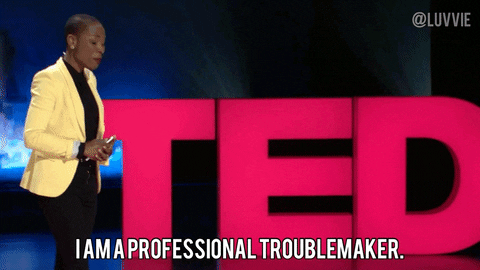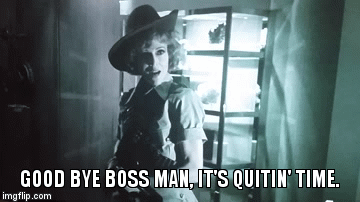The Carbon Con, AI Photos & Sick Days
5 in 5 - Brave & Heart HeartBeat #176 ❤️
This week we’re talking about the downfall of the cash for carbon system, Elon Musk’s increasingly desperate plans to make money with X, and can AI-made photos help you get a job?
Plus, what happens when people actually start using their sick days, and are walking meetings really the answer to productivity?
Let's get into it.
Were you forwarded this? Not a subscriber? 👉 Sign up here
#1 - The Cash For Carbon Con
For a while now, experts have expressed scepticism at the popular method of carbon offsetting provided by the voluntary carbon credit market. Marketed as an easy way to help corporations and average Joe’s like you and me fight global warming, and more importantly, perhaps, have a clean conscience.
The news broken by the New Yorker magazine this week about the downfall of the world’s largest carbon offsetting company “South Pole” only confirms that something dodgy has been going on all this time.
They sold millions of dollars of climate credits that, if reports are to be believed, were basically useless, to corporate giants like JetBlue, Volkswagen, and Nestlé.
The credits mostly relied on a forest preservation project in Zimbabwe owned by a tycoon who claims he invested some of the money into local farming and schools – as advertised by the company – but can’t provide any reliable accounting of how the money was spent, and admits to dodgy international transfers.
The company also vastly overestimated the number of trees they saved by using a formula supplied by the controversial certification agency Verra, which means that a huge 64% of the carbon credits generated by South Pole didn’t actually do anything…
Well, they didn’t offset any pollution. They did make the company money.
South Pole’s founder, Renat Heuberger, began as a climate activist – paralysed with fear about the climate as a young adult – and seemed to really believe that he was there to “save the climate”.
His company, however, had a consumer-friendly outlook – arguing that we don’t have to “stop having fun” to save the climate. We should continue having fun, safe in the knowledge that our carbon emissions are offset and we aren’t harming the planet at all.
It seems like he was simply selling what people really wanted to hear, no wonder they bought it.
#2 - Subscription-Gate Continues
Next in the long line of social media platforms offering/forcing subscriptions on users is the artist formerly known as Twitter, but their version is a lot more complicated, because, well… Elon Musk.
Let’s break it down. Right now, you can subscribe to X premium for $8. Subscribers apparently see about 50% fewer adverts in their feed, along with having the ability to edit posts, create posts longer than 280 characters, and get a verification tick.
There’s also a $1 yearly subscription fee being tested, which according to Musk is the ONLY way to deal with the hordes of bots he thinks are taking over the platform. By his logic, a bot costs barely anything to create on a free platform and even a small cost, like one dollar a year, would put people off creating spam bots.
New users in New Zealand and The Phillipines are currently being charged the yearly fee, and those who want to opt out of the fee will be able to access the X platform in a “read only” context.
He’s now announced the creation of another two tiers of subscriptions, described by Musk in a tweet (can we still call it that? We don’t want to call it an X) as a lower price with all the features and all the ads, and a higher price with all the features and none of the ads. It is unclear where X premium will come into this, or if Musk remembers it even exists.
As always in Musk world, this change could be implemented in a year, in an hour, or never, if he forgets to tell his dev team about it.
#3 - Can AI Photos Get You A Job?
Taking career tips from TikTok again, the new viral thing is creating professional headshots for your LinkedIn profile or CV with AI.
There are plenty of apps that can do this for you but the one doing rounds on TikTok is called Remini and uses AI-based software to create photos that look like they were taken by a professional photographer.
Remini asks you to upload eight to ten selfies in good lighting and from different angles. The AI then uses those images to learn about the way you look, then spits out images of you looking smart and glam in business-style outfits. The images we’ve seen look like headshots of someone giving a Ted Talk. If you’re trying to come across as professional – it works.
There are plenty of arguments against it, which mostly revolve around the fact that we shouldn’t be judging potential candidates for jobs on their looks, and what it means that women’s images especially are made more beautiful, and in some cases, thinner.
However, the bottom line is that these services provide images that will allow you to put your best foot forward on LinkedIn or in countries where CVs typically require an image (not in the UK, but in Europe and the US it’s quite common).
In the same way that we wouldn’t necessarily turn up to an interview in casual clothes or looking like we’ve just woken up, these apps allow us to project a more professional image of ourselves than a photo taken on a night out, without having to have the time or money to get professional shots taken.
Someone who can afford to do that will come across as already successful, and you know what they say – fake it until you make it.
Now while we’d like to give it a go just out of curiosity, the question of giving your likeness to an AI software is what we find a little bit more troubling… but that’s a story for another day.
#4 - You Actually Want To Use Your Sick Days?
In the US, the amount of employees taking sick days has soared by 10% since 2019. Is that because everyone’s getting sick more often? Not really.
The main reason seems to be a change in attitude. Younger workers are much less likely to “power through” illness in an attempt to prove their worthiness than older generations were.
They have a sense of entitlement to the benefits they’re provided by their job that previous generations didn’t, partly due to a shift in power balance between employer and employee. Not to mention the fact that we all just spent the last few years really getting to grips with what it means to be “contagious” (remember Covid?).
People also value their health more, potentially again due to Covid. Gone are the days when you worked through anything that wasn’t hospitalisation – we now understand that we’re not productive when we’re unwell, and greater understanding around burnout may be leading people to prioritise their health over their jobs because they’ve seen what happens when they don’t.
The new generation of workers aren’t the only ones either – two experienced workers who were interviewed by The Wall Street Journal shared similar stories of working through extreme illness with no thanks from their bosses.
One was eventually unceremoniously laid off, while another left her job after the boss didn’t take kindly to her wanting to take some time off to recover from pneumonia after passing out in the office.
While it does cost money to give workers sick days, it also costs money to replace workers who leave because they’re not treated like people.
One recruiter interviewed suggested that “job-hopping” was the culprit - leading people not to work as hard because they don’t build a rapport with colleagues so don’t mind leaving them with extra work while they’re off sick.
We would counter that that kind of attitude is exactly what causes the job-hopping to begin with.
#5 - Walking Meetings – Nonsense Or Nice?
This article from Welcome to the Jungle sounds like absolute nonsense, from the use of the phrase “sitting is the new smoking” (apparently something that people have started saying) to claims that the power of nature plus the act of walking can “rewire cognitive functions”, “nurture creativity” and even make work relationships deeper.
Apparently, though, it’s backed up by science.
Experts say that stepping away from our desks and our screens gives us a new perspective, compared to “zooming out” renewing our focus and reminding us that work isn’t everything.
If excel is doing your head in for example, stepping away from your desk will remind you that the world is more than columns and formulas that won’t do what you want them to, and allow you to come back to it later with a fresh perspective.
The power of nature to help us focus is also backed up by science. Something called “attention restoration theory” backs up the idea that being immersed in nature “rejuvenates our cognitive functions” and allows us to access the prefrontal cortex – the part of our brain that helps us problem solve, prioritise and focus.
So where does the walking meeting bit come in? Apparently simply walking side by side can make colleagues feel more bonded because the physical act of moving together aligns you both, and as you’re both feeling positive from your walk in nature and getting a fresh perspective on the world because you’re not looking at excel – your “meeting” is going to be more productive.
Of course, if your office is in a busy town or an industrial estate, the surroundings may be less enriching for the brain. And while remote meetings can be held while on a walk with the help of earphones – we’ve had clients who do this in their companies and it works for them – it takes away the video part of the call which can be helpful for body language and eye contact. And taking notes is obviously out of the window in most of these situations.
While all these ideas make sense separately, we’re not sure a walking meeting is the amazing meditative experience Welcome to the Jungle are selling it as.
BUT, that said, don’t knock it until you try it. Having a walking chat every once in a while will undoubtedly refresh you, getting outside of a work context with your colleague will probably bring you closer together, and life is always better without excel in front of your face.
Brave & Heart over and out.
Bonus
Video Game Hall Of Fame
The New York Museum of Play counts the world video game hall of fame among their exhibits.
The lucky winners might surprise you, from the obvious The Last of Us to the less obvious Barbie Fashion Designer.
While you’re on the site you can also vote for a forgotten classic toy to get inducted into the toy hall of fame, from Transformers to My Little Pony
To find out more on how you can retain your top talent, or how we can help you with digital solutions to your business and marketing challenges, check out our case studies.



